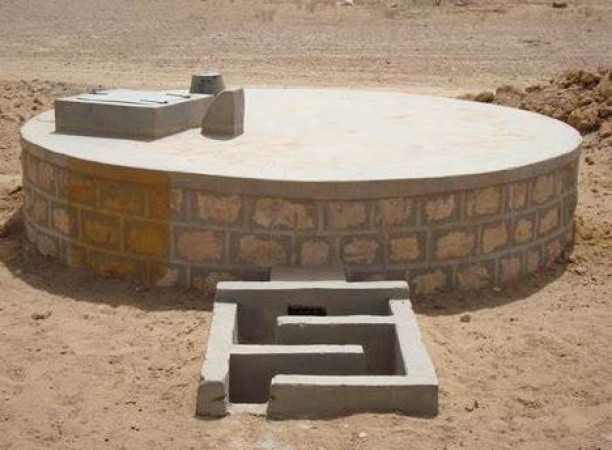
Water is a precious resource that is essential for our survival and the sustainability of the planet. However, with increasing population and climate change, water scarcity has become a significant concern in many regions. To address this issue, rainwater harvesting and conservation have emerged as effective methods to utilize and preserve water resources. In this article, we will explore the concept of rainwater harvesting, its benefits, different techniques, and the importance of conserving rainwater.
Understanding Rainwater Harvesting
Rainwater harvesting refers to the collection and storage of rainwater for various purposes. It involves capturing rainwater from rooftops, land surfaces, and other sources, and channeling it to storage systems for future use. Rainwater can be harvested on an individual, community, or larger scale, depending on the requirements and resources available.
Benefits of Rainwater Harvesting
Rainwater harvesting offers numerous benefits both for individuals and the environment. Some key advantages include:
Water Conservation: Rainwater harvesting helps reduce reliance on traditional water sources such as groundwater and surface water, conserving these resources for future generations.
Cost Savings: By collecting rainwater, individuals and communities can reduce their water bills and save money in the long run.
Sustainable Solution: Rainwater harvesting promotes sustainable water management practices by utilizing a naturally replenished resource.
Techniques for Rainwater Harvesting
There are several techniques used in rainwater harvesting, including:
Rooftop Collection: The most common method, where rainwater is collected from rooftops and directed into storage tanks or reservoirs.
Surface Runoff Collection: Collecting rainwater from land surfaces and directing it to storage areas through channels or trenches.
Stormwater Drainage Systems: Utilizing existing stormwater drains and redirecting the runoff to storage systems.
Rainwater Harvesting Systems
Rainwater harvesting systems consist of various components that work together to capture and store rainwater. These components include:
Catchment Area: The surface (usually rooftops) from which rainwater is collected.
Gutters and Downspouts: Channels that collect rainwater from the catchment area and direct it into storage tanks.
Storage Tanks: Containers or reservoirs that store the harvested rainwater for future use.
Filtration Systems: Filters that remove debris and contaminants from the collected rainwater.
Rainwater Collection Methods
Rainwater can be collected using different methods, such as:
Rain Barrels: Small containers placed under downspouts to collect and store rainwater for gardening or other non-potable uses.
Cisterns: Large storage tanks that can hold a significant amount of rainwater for various purposes.
Ponds and Lakes: Natural or artificial bodies of water used to collect and store rainwater on a larger scale.
Importance of Rainwater Conservation
Conserving rainwater is crucial for several reasons:
Mitigating Water Scarcity: Rainwater conservation helps alleviate water scarcity in regions where water resources are limited.
Reducing Flood Risks: By capturing rainwater, the burden on drainage systems is reduced, minimizing the risk of floods during heavy rainfall.
Groundwater Recharge: Harvesting rainwater allows it to seep into the ground, replenishing groundwater reserves and maintaining a sustainable water cycle.
Promoting Rainwater Harvesting
To encourage widespread adoption of rainwater harvesting, it is important to:
Raise Awareness: Educate communities and individuals about the benefits of rainwater harvesting and its impact on water conservation.
Policy Support: Governments and local authorities can implement policies and regulations that promote rainwater harvesting in new constructions and provide incentives for retrofitting existing buildings.
Implementing Rainwater Harvesting at Home
Individuals can implement rainwater harvesting at home through the following steps:
Assessing Water Needs: Determine the water requirements for various purposes like gardening, toilet flushing, and laundry.
Calculating Catchment Area: Calculate the available rooftop or surface area that can be used for rainwater collection.
Selecting Storage System: Choose appropriate storage tanks or containers based on water requirements and available space.
Installation and Maintenance: Install the necessary components and ensure regular maintenance to keep the system functioning effectively.
Rainwater Harvesting in Agriculture
Rainwater harvesting plays a significant role in sustainable agriculture by providing an alternative water source for irrigation. It helps farmers become less dependent on erratic rainfall patterns and contributes to increased crop yield and food security.
Rainwater Harvesting in Urban Areas
In urban areas, rainwater harvesting can help reduce the strain on municipal water supplies and alleviate the pressure on existing water infrastructure. Implementing rainwater harvesting systems in buildings and public spaces can make cities more resilient to water shortages and improve overall water management.
Challenges and Solutions in Rainwater Harvesting
While rainwater harvesting offers many benefits, there are challenges to overcome, including:
Seasonal Variations: Rainfall patterns may vary seasonally, requiring storage systems to be appropriately sized to ensure water availability during drier periods.
Water Quality Concerns: Proper filtration and treatment systems must be in place to ensure harvested rainwater meets the required quality standards.
Rainwater Harvesting Case Studies
Numerous successful rainwater harvesting projects have been implemented worldwide. Some notable case studies include:
Singapore: The "Active, Beautiful, Clean Waters" program in Singapore utilizes an extensive network of rain gardens, bioswales, and ponds to capture and store rainwater for various purposes.
India: The "Jal Shakti Abhiyan" campaign in India promotes rainwater harvesting techniques and has successfully increased water availability in water-stressed regions.
Rainwater harvesting and conservation are vital practices that can help address water scarcity and promote sustainable water management. By utilizing rainwater, we can reduce our reliance on traditional water sources, save costs, and contribute to a more resilient and water-secure future.
The Glass Armonica: Unveiling the Enchanting Sounds of Glass Music
23 Airports Set for Major Upgrades to Boost Traffic and Elevate Travel Experience
Sensex and Nifty Soar to All-Time Highs, Fueling Investor Confidence in India's Economic Recovery